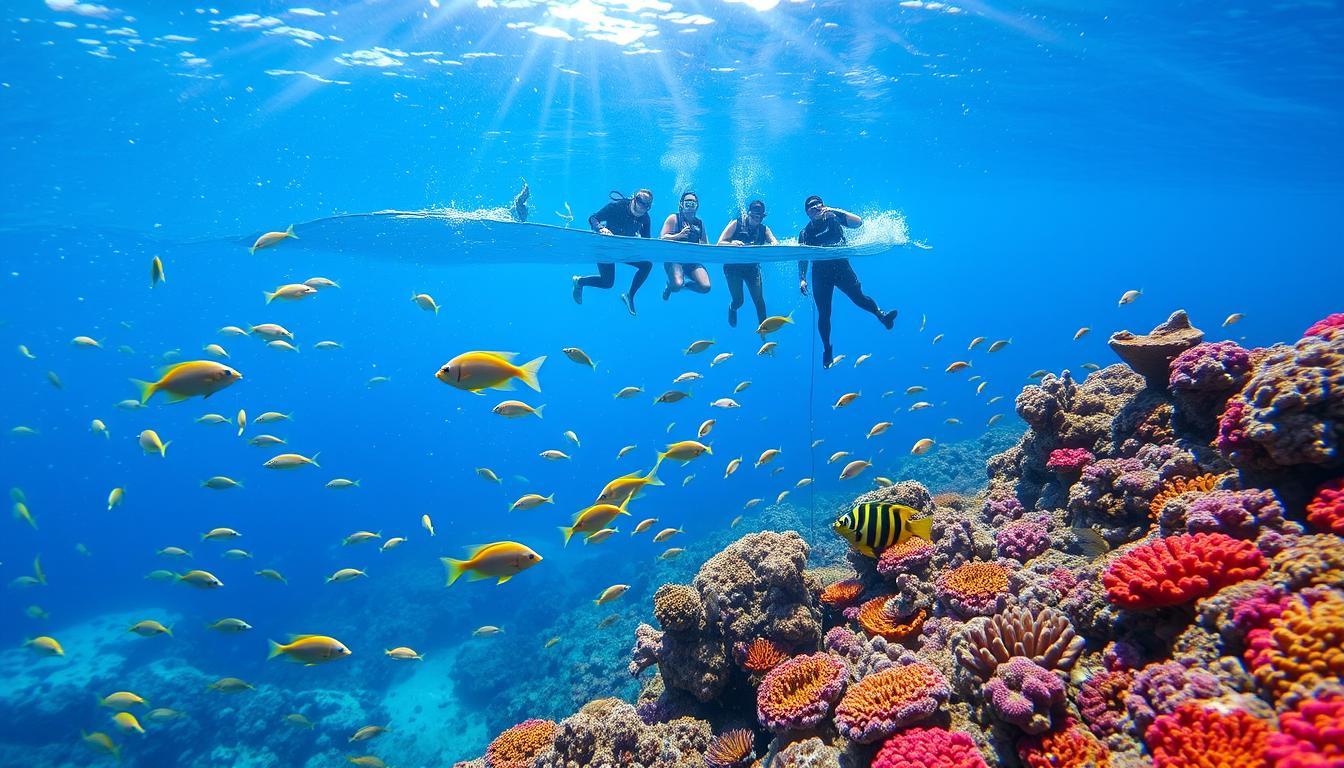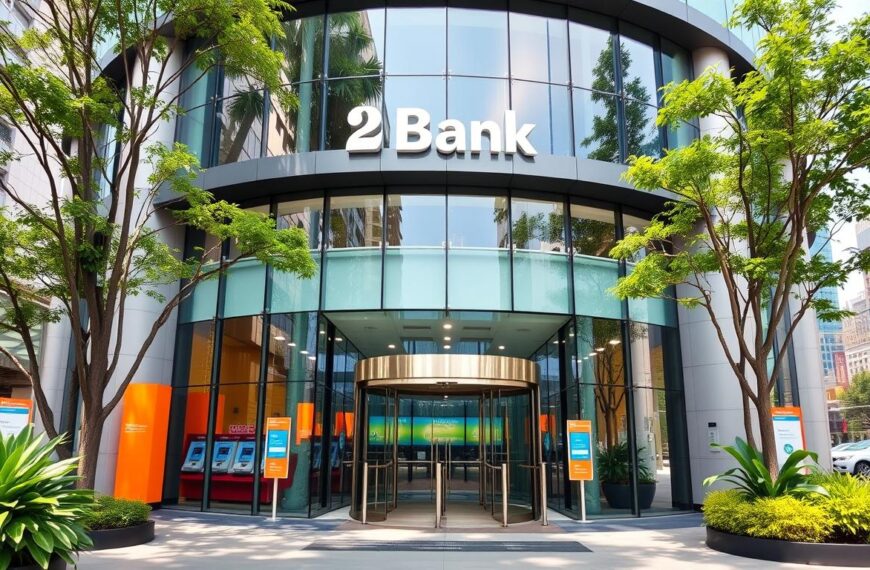The Great Barrier Reef is a precious natural wonder facing many threats. These include climate change, pollution, and harmful fishing. With 25% of the reef damaged by the third mass bleaching event in five, we must act fast. This article looks at how we can protect this vital marine ecosystem for the future.
The Great Barrier Reef is not just a treasure but also a key part of Australia’s economy and culture. It adds $6.4 billion to the economy and supports 64,000 jobs1. It’s also home to nearly 9,000 species1. The reef is also deeply important to Indigenous communities in Australia.
The reef is under threat from many environmental issues. These include rising sea temperatures, pollution, and harmful fishing. To save it, we need a plan that involves governments, communities, and individuals working together.
Understanding the Great Barrier Reef’s Significance and Current State
The Great Barrier Reef is a natural wonder that is very important for Australia and the world. It covers about 348,000 square kilometres2. This huge underwater world is full of life, with over 1,500 fish species, 400 coral species, and 4,000 mollusk species2.
It’s not just about the animals. The Reef also supports the Australian economy and the culture of Indigenous communities.
Economic Impact and Tourism Value
The Great Barrier Reef is a big help to the Australian economy. It brings in about $6.4 billion a year and supports over 64,000 jobs2. Its beauty and variety of marine life make it a top spot for tourists, attracting millions each year2.
Marine Biodiversity and Ecosystem Importance
The Great Barrier Reef is a natural wonder with a huge variety of marine life. It has over 2,500 reefs and 900 islands2. It’s home to many species, including six of the world’s seven marine turtles and 30 whale and dolphin species2.
This diversity shows how important the Reef is for life. It keeps a balance that supports many living things.
Indigenous Cultural Heritage
The Great Barrier Reef is very special to Australia’s First Nations peoples. They have a deep connection to the land and sea. The Reef is part of their history and traditions, where they have always found resources and respected its value.
As a World Heritage site, the Great Barrier Reef shows the lasting cultural heritage of Indigenous Australians.
But, the Reef faces big environmental challenges. These include climate change, pollution, and fishing practices3. These issues have caused five mass bleaching events in eight years3.
It’s very important to protect the Reef’s unique life and cultural value. This is a big task for Australia and the world.
Major Environmental Threats Facing the Reef
The Great Barrier Reef is facing big environmental challenges. These include climate change impact, water pollution, and commercial fishing. The Great Barrier Reef is made up of about 2,900 reefs and 940 islands and cays. It covers an area of around 344,400 square4.
Climate change is a big threat to the Reef. Sea temperatures have risen by 0.8°C since the late 19th century5. This has led to more and worse coral bleaching events5. Water pollution from land is also a major problem. Nutrients, pesticides, and sediments have increased a lot since Europeans arrived5.
Commercial fishing is another challenge. Gill nets, up to 600 meters long, harm many marine animals4. The dugong population, which lives near the Reef, is declining4.
These threats are badly affecting the Reef’s biodiversity and health. Coral cover has dropped by 50% since 1985, mainly due to crown-of-thorns starfish5. The Reef is in a critical state. We need to act fast to protect it for the future.
“The Great Barrier Reef is one of the most important and valuable ecosystems on the planet, but it is under threat from a range of environmental challenges that require immediate attention and action.”
Strategies to Save the Great Barrier Reef: Government and Community Initiatives
The Queensland Government has made big steps to protect the Great Barrier Reef. They have spent over $1 billion since 2015 to keep this natural wonder safe6. Their efforts include improving land, reducing pollution, and removing harmful species like the crown-of-thorns starfish to help the reef stay strong6.
Water Quality Improvement Programs
The Queensland Government knows water quality is key for the reef’s health. They have launched the Reef Water Quality Program, getting $289.6 million to work with industries and communities to fight pollution6. They also have rules for farmers to follow to make water cleaner in the Reef area6.
Commercial Fishing Regulations
They are also working to control commercial fishing. A petition wants to make the Reef net-free to protect marine life from harmful nets6. This effort matches the Queensland Government’s goal for sustainable fishing, which is vital for the reef’s health.
Community and non-profit groups are also crucial in saving the reef. The Great Barrier Reef Foundation has been working for 20 years to protect the reef, focusing on climate change7. Their Reef Restoration and Adaptation Program (RRAP) is the biggest program worldwide to help a big ecosystem face climate change7.
These efforts show everyone’s commitment to saving the Great Barrier Reef for the future7.
| Initiative | Description | Funding |
|---|---|---|
| Queensland Energy and Jobs Plan | Outlines a pathway to transform the electricity system in Queensland, aiming for 80% renewable generation by 2035. | 6 |
| Queensland Renewable Energy and Hydrogen Jobs Fund | Supports additional renewable energy generation and storage capacity projects. | 6 |
| Reef Assist program | Focuses on delivering priority environmental projects and creating regional jobs in the Reef catchment. | 6 |
| Land Restoration Fund | Provides opportunities for landholders, farmers, and First Nations people to generate new income streams through carbon farming projects. | 6 |
These efforts, along with the Great Barrier Reef Foundation and its partners, show a wide range of actions to protect the reef’s future7. With everyone working together, Australians are hopeful about saving this natural wonder for future generations7.
Sustainable Tourism and Responsible Visitor Practices
Sustainable tourism is key to protecting the Great Barrier Reef. Visitors should pick eco-certified tours and use reef-safe sunscreen. It’s also important to respect marine life8. The tourism industry helps by monitoring the reef and doing surveys. They also manage pests and help after cyclones8.
The Master Reef Guide program trains guides to teach visitors about the reef. These guides do surveys and share important data8. Education programs teach visitors about the reef’s value and how to protect it. This helps visitors behave responsibly8.
Responsible tourism balances economic gains with conservation8. Coral reefs support nearly one billion people and contribute US$36 billion yearly9. But, the COVID-19 pandemic showed we need sustainable tourism to protect the reef9.
- The Reef Authority has a zoning plan to protect vulnerable areas8.
- Tourism operators must follow strict rules on waste and wildlife interactions8.
- Working together is essential to protect the Great Barrier Reef8.
- Research programs like “Eye on the Reef” help protect the reef8.
By choosing sustainable tourism, we can protect the Great Barrier Reef for future generations89.

Individual Actions for Reef Conservation
The Great Barrier Reef is a natural wonder that needs our help. Governments and industries are doing their part, but we can also make a difference. By living sustainably, we can help keep the Reef and oceans healthy for the future10.
Reducing Plastic Consumption
Plastic pollution harms our oceans a lot. In Australia, we throw away a lot of single-use plastic each year11. We can help by using reusable bags, saying no to plastic straws, and choosing items with less packaging10. These small actions can greatly reduce plastic waste in our oceans.
Supporting Sustainable Seafood
Seafood is a big part of food for many people worldwide11. When we buy seafood, we can choose to help the ocean. By picking seafood with the Marine Stewardship Council (MSC) or Aquaculture Stewardship Council (ASC) labels, we support good fishing practices10. We should also follow fishing rules and avoid anchoring near corals to protect the Reef’s life.
Minimising Carbon Footprint
Climate change is a big threat to the Reef, causing coral bleaching10. We can help by using public transport, carpooling, or biking. Using green household products and paying the $6 levy when visiting the Reef also helps10.
Together, we can protect the Great Barrier Reef. By reducing plastic, choosing sustainable seafood, and lowering our carbon footprint, we all play a role in saving this natural wonder for the future11.
| Action | Impact |
|---|---|
| Reducing plastic consumption | Minimises plastic pollution in marine environments |
| Supporting sustainable seafood | Promotes sustainable fishing practices and protects vulnerable species |
| Minimising carbon footprint | Helps mitigate the impacts of climate change on the Reef |
“Every individual action, no matter how small, can make a significant difference in the conservation of the Great Barrier Reef. Together, we can ensure this natural wonder remains a thriving ecosystem for generations to come.”10
By taking these steps, we can all help save the Great Barrier Reef. This will protect its value for our environment, economy, and culture11.
Conclusion
Protecting the Great Barrier Reef is a big task that needs everyone’s help. Governments, communities, and individuals must work together. Thanks to conservation efforts and growing awareness, we’re seeing positive changes12.
We can all help save the Great Barrier Reef. By using sustainable practices and supporting conservation, we make a difference. Reducing carbon emissions and choosing eco-friendly options are key steps13.
Climate change affects the Great Barrier Reef’s survival. Global efforts to fight climate change are crucial. With dedication to conservation, we can keep this natural wonder alive for future generations14.
FAQ
What is the economic value and ecological importance of the Great Barrier Reef?
The Great Barrier Reef adds £6.4 billion to Australia’s economy each year. It supports 64,000 jobs full-time. It’s home to nearly 9,000 species, including six marine turtle species. It’s also deeply connected to Australia’s First Nations history.
What are the major threats facing the Great Barrier Reef?
Climate change, water pollution, and commercial gill net fishing threaten the reef. Climate change causes coral bleaching and ocean acidification. Water pollution harms marine life. Commercial gill nets, up to 600m long, risk species like turtles and dolphins.
What are the government and community initiatives to protect the Great Barrier Reef?
The Queensland Government has spent over £1 billion since 2015 to protect the reef. They focus on improving land, reducing pollution, and removing harmful species. They also aim to improve water quality and regulate fishing.
There’s a push to make the reef net-free to protect marine life. This includes a petition to ban harmful gill nets.
How can sustainable tourism help protect the Great Barrier Reef?
Sustainable tourism is key to protecting the reef. Visitors should choose eco-certified tours and use reef-safe sunscreen. They should also respect marine life.
The Master Reef Guide program trains guides. They provide educational tours and conduct reef surveys. This helps monitor the reef’s health.
What can individuals do to contribute to reef conservation?
Many actions can help protect the reef. Reducing plastic use and supporting sustainable seafood are good starts. Minimising carbon footprint and using eco-friendly products also help.
Joining local clean-ups and educating others about reef conservation are important too.

















